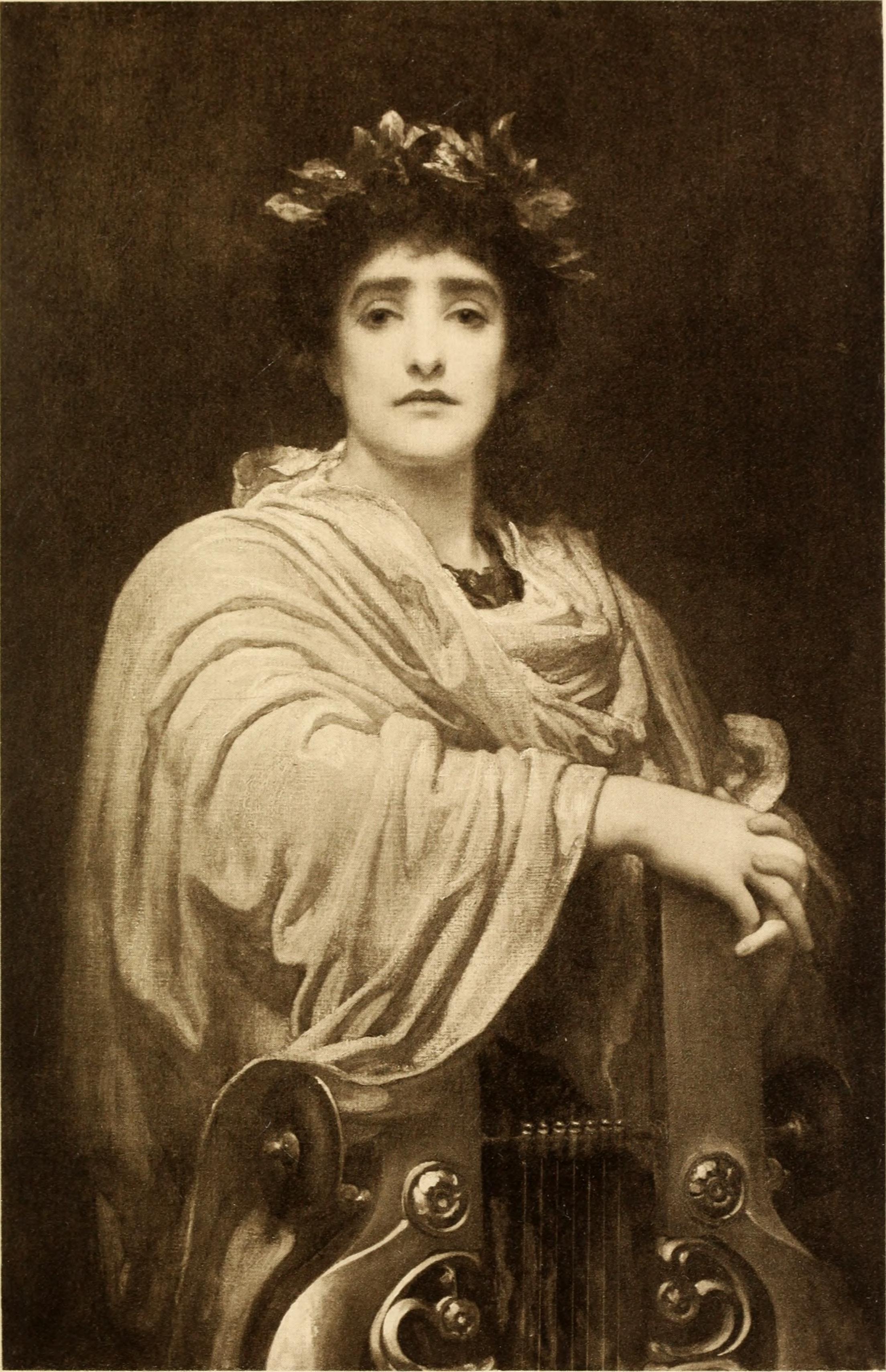Reseña
Female author of popular poetry, both monodic and choral poems, noted for her great knowledge of local mythology. She is related to the poetess Mirtis, whose pupil she may have been, or to the poet Pindar, with whom she may have rivalled. Her dating, however, is unclear. While some authors place her in the Archaic period, others date her to Hellenistic times. Included by Antipater in the "canon" of the nine Greek poetesses, she was a source of inspiration for other later authors.
Justificaciones
- Lyric poetess, author of both monodic and choral poems.
- Possible disciple of the poetess Myrtis, if we accept the ancient dating of Corinna.
- According to some traditions, she rivaled Pindar in the quality of his poetic output and beat him in a poetic competition.
- Praised by other authors such as Antipater (Palatine Anthology, 9, 26), Propertius (II, 3, 21) and Statius (Silvae, 5, 3, 158).
- She was part of the so-called first "canon" of women's literature.
Biografía
Biographical data are scarce and sometimes contradictory. The Suda tells us of three different Corinas: one from Tanagra, a pupil of Myrtis; another from Thespiae, called by some "Corinthian"; and a younger one from Thebes with the nickname "the fly". Modern critics agree that the three references should be combined. Secondary sources and fragments of her work seem to indicate that she was born in Tanagra. Pausanias (IX, 22, 3) informs us that there was a memorial monument in honor of the poetess in the main square of Tanagra, as well as a portrait of her in which she is represented with a ribbon girding her head as a winner in some competition.
The dating is also unclear. Opinions are divided between those who place her at the end of the archaic period and those who place her in the Hellenistic period. The former are based on the world and the imaginary that emerges from her poems, which is more in line with the archaic period. Some of them, moreover, take for certain the news of her rivalry with Pindar and consider her a contemporary of this poet. The second group, based on the features of the dialect that the author uses, and the fact that they do not agree with the epigraphic testimony of the Boeotian epigraphy of the 5th century BC, place her at the end of the 3rd century BC. It is true that no secondary source relates her to the Hellenistic period and it is possible that these more "modern" dialectal features are due to the edition that could be made of the author's work in the 3rd century BC.
Relationship with Pindar: Pausanias (IX, 22, 3) tells that she defeated Pindar in a poetic competition, although it is doubtful whether this is a real fact or a literary recreation to compare the different styles of both authors. Plutarch (De gloria Atheniensium, 4, 347 ff.) tells us a story in which Corinna reproaches Pindar for not using myths in his compositions, since they are the essence of poetry. Later, when he uses them profusely, she mocks him by telling him that to “sow with the hand”.
Regarding the controversial issue of its dating, in an article by the doctor in Classical Philology Álvaro F. Ortolà Guixot we can read:
«The problem of the dating of Corinna is a question raised by modern philology. For all ancient sources Corinna is a contemporary of Pindar. This undisputed opinion in antiquity was accompanied by anecdotes about his rivalry with Pindar. Three positions have been adopted: consider that Corinna was a contemporary of Pindar, as tradition indicates; Second, consider that the poet belongs to a Hellenistic age, that her poetry is a work of scholarship, and that therefore the relationship between Pindar and Corinna is false or fictitious and timeless. Third: I admit that there are arguments for and against both positions.
The latest and most recent contributions to the Corinnian problem have come from the hand of B. Gentili and L. Lomiento who are based on the metric question to demonstrate that Corinna was not Hellenistic and reach the conclusion that in P. Oxy. 2370 sufficient elements are observed to consider that it contains the work of a grammarian who comments on Corinna's work.
With this interpretation, the poetess is restored to the time from which the ancient sources never took her. »
Ortolà Guixot, Álvaro F. (2005). «Corina y su poesía: una revisión», in Minerva. Revista de Filología Clásica, 18, pp. 71-91. Valencia: Universitat de València
Gentili, Bruno y Lomiento, Liana (2001) «Corina, Le Aposidi (PMG 654 col. III 12-51)», QUCC 68 (2)
She was included by Antipater of Thessalonica in his "canon" of nine Greek poetesses.
Bibliografía
-Bernabé Pajares, Alberto y Rodríguez Somolinos, Helena (1994), Poetisas griegas, Madrid: Ediciones Clásicas.
-López Férez, J. A. (Ed.) (2000) Historia de la literatura griega, Madrid: Cátedra
-Ortolá Guixot, Álvaro (2005). “Corina y su poesía: una revisión”, Minerva, Revista de Filología Clásica, 18, (retrieved on 21/07/2021), <https://revistas.uva.es/index.php/minerva/article/view/2747 >
Enfoque Didáctico
-Classical culture: Block Classical roots of today's world. Everyday life; Block Continuity of cultural heritage. Literature (Poetry), art and science.
-Greek Baccalaureate: Block The text: comprehension and translation; Block Literary education.
-Spanish Language and Literature ESO: Literary Education Block.
-Universal Literature 1st Baccalaureate: Interpretation of Greek period fragments of different genres and themes.
Documentos
